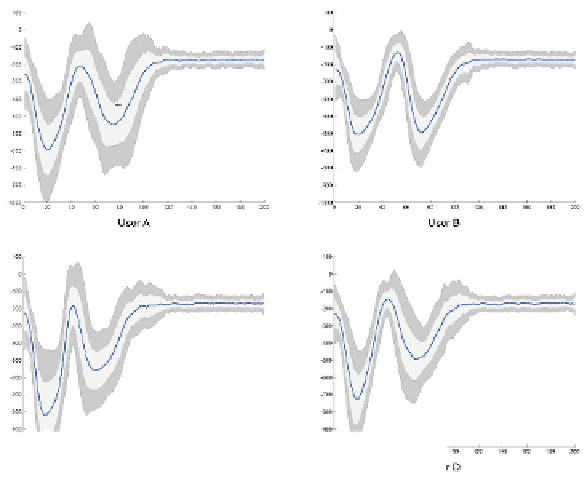Information Technology Reference
In-Depth Information
Fig. 5.
Examples in our door opening/closing trajectory dataset
into account will improve the performance by comparing with the standard BoW
model.
In our temporal BoW model,
n
histograms are generated for a time series data
instance. How to combine these histograms will also be an interesting issue. Many
feature fusion methods have also been proposed to address this problem [10]. In
our experiments. we simply concatenate all the histograms. More specifically, a
instance
x
i
p
is represented by [
h
1
,
h
2
,...,
h
i
n
]
n×d
.
∈
R
∈
R
4 Experiments
4.1 Data Description
In our experiments, we apply our proposed method to user identification by door
opening/closing trajectory. To collect the time series data, we adopt 3-axis ac-
celerometer to collect 4 users opening/closing trajectories. The sampling rate of
accelerometer is 50 Hz (i.e., 20 timestamps within a second). In order to collect
full sequence of operation for door opening/closing, the sensor records each tra-
jectory by 10 seconds while the door is opened. Thus, we have 200 timetamps in
each time series data instance. We collect 100 records of opening/closing trajec-
tory for each user. It is worth noting that the quantity of acceleration is affected
by the relative position of the door since the sensor is attached on the door. As a
result, the Z-axis is might not help for the recognition since we will only sensing
small values from this axis . Furthermore, the X-axis and Y-axis will present


Search WWH ::

Custom Search